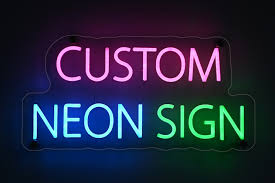Posters are a powerful communication tool, whether you’re promoting an event, advertising a product, or decorating a space. Poster printing, however, can be more complex than it seems. From choosing the right paper to understanding printing techniques, this guide will cover everything you need to know to create stunning posters that effectively convey your message.
Understanding Poster Printing
Before diving into the specifics, let’s understand the basics of poster printing. Posters are typically printed on large-format printers that can handle paper sizes ranging from A2 to A0 and beyond. The most common printing techniques for posters include digital printing and offset printing, each with its own advantages and considerations.
Digital Printing: Ideal for short print runs, digital printing offers quick turnaround times and cost-effective solutions. It’s perfect for small businesses, events, and one-off prints.
Offset Printing: Suited for larger quantities, offset printing provides high-quality prints with vibrant colors and sharp details. It’s the preferred choice for bulk orders and ensures consistent quality across all prints.
Choosing the Right Paper
Selecting the right paper is crucial for the overall look and feel of your poster. Here are some common types of paper used for poster printing:
Glossy Paper: Offers a shiny finish that makes colors pop. Ideal for vibrant designs and photographs, glossy paper is commonly used for advertising purposes.
Matte Paper: Provides a non-reflective finish, giving your poster a more sophisticated look. Matte paper is great for posters that will be viewed up close, such as in art galleries or museums.
Vinyl: Known for its durability, vinyl is weather-resistant and tear-proof, making it perfect for outdoor posters or long-term displays.
Designing Your Poster
When designing your poster, keep the following tips in mind to ensure a visually appealing and effective end result:
Simplicity: Avoid cluttering your poster with too much text or images. A clean, simple design is more likely to grab attention and convey your message effectively.
High-Quality Images: Use high-resolution images to ensure crisp, clear prints. Blurry or pixelated images can detract from the overall impact of your poster.
Color Scheme: Choose a color scheme that complements your message and brand. Use colors strategically to create visual interest and draw attention to key elements.
Printing and Distribution
Once your poster is designed, it’s time to print and distribute it. Consider the following factors:
Print Size: Ensure your poster is printed at the correct size to avoid any distortion or cropping of your design.
Quantity: Determine the number of posters you need based on your distribution plan. Consider factors such as target audience, location, and duration of the campaign.
Distribution Channels: Decide how you will distribute your posters. Options include posting them in public spaces, handing them out at events, or mailing them to targeted recipients.
Conclusion
Poster printing is a creative and impactful way to communicate your message to a wide audience. By understanding the basics of poster printing, choosing the right paper, designing with purpose, and distributing strategically, you can create posters that effectively capture attention and convey your message.







Be First to Comment